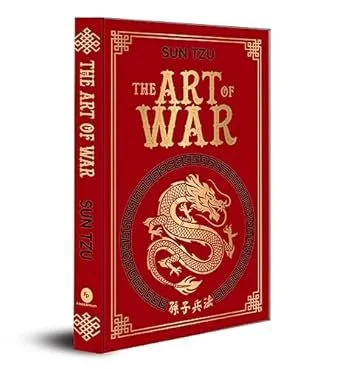By Mayu Ccasa (11 years old)*
The Art of War made me see strategy in a completely different way. Before reading it, I thought strategy was only for military leaders or people in politics. I didn’t realize how much it could apply to everyday life, like preparing for a pitch, solving a problem, or even deciding how to respond when something goes wrong.
This book was written by Sun Tzu more than two thousand years ago. It’s one of the oldest books still being read today. Even though it didn’t win awards back then, one of its English translations won the 2003 IPPY award for multicultural nonfiction. That shows how powerful and useful it still is.
The book isn’t a story. It’s more like a guide with short lessons. Sun Tzu explains how to win without fighting, how to know yourself and your opponent, and how to stay calm when things get how you don’t want to. One line that surprised me was “In the midst of chaos, there is also opportunity.” That made me think about how sometimes the best move is not obvious, but you can find it if you stay focused.
The Art of War also explores the idea that conflict is not always physical: it can be psychological, strategic, or even invisible. Sun Tzu emphasizes that the best victories are those achieved without fighting, through preparation, positioning, and understanding. This challenges the usual view of war as something loud and destructive. Instead, the book presents it as something quiet, calculated, and often avoided. That perspective makes the book feel more like a philosophy than a manual. It encourages readers to think before acting, to observe before deciding, and to value patience over pressure. These ideas are repeated throughout the chapters, showing that true strength comes from control, not chaos.
Reading this book was different from anything I’ve read before. It’s not emotional like a diary, or exciting like a fiction book, but it’s powerful and deep as these last. I had to slow down and think about what each part meant. It helped me reflect on how I prepare for things and how I react when I feel pressure. I started to notice how strategy shows up in everything, from little conversations to professional, high-level situations.
I would recommend this book mostly to people that like sports or games that involve strategy, or that has a job that includes it too, because this book has all of this in its content.
Some questions came to my mind while reading, like:
Why do people rush into decisions without thinking through the consequences?
How can I use strategy to stay calm when I feel stressed?
These questions helped me understand that being strategic doesn’t mean being the fastest. It means being smart, prepared, and aware of what’s happening around you.
One lesson I learned from this book is that timing matters. You can have a good plan, but if you use it at the wrong moment, it won’t work at all.
And finally…
The Art of War taught me that strength isn’t just about power. It’s about thinking clearly, staying patient, and knowing when to act. That’s the kind of strength I want to build: one that reflects on what happens around me—not what happens because of me.
*This text was written by the author and reviewed by his peers. It has not been edited in any way by adults and is presented here exactly as the 11-year-old author submitted it.


